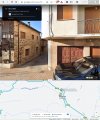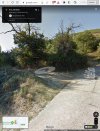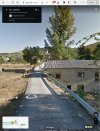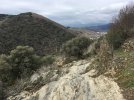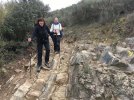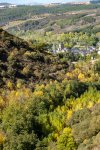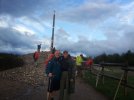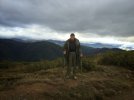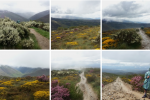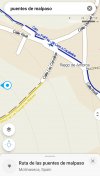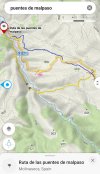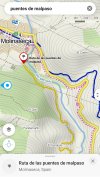Have you walked this route
Sadly no.
My training jaunts up and over 400 m hills that surround me on steep dirt littered with rubble have prepared me for most situations.
In May 2016 I had pulled hip muscles on the descent from Alto del Perdon. After much effort and anguish, I eventually pulled away to seek treatment in London (and walk Thames Path and then from Southwark Cathedral to Canterbury Cathedral).
Fully recovered I returned to Estella in October 2017 (to continue from my effective stopping point in 2016). Even then I was not looking forward to the descent into Molinaseca.
On arrival at Leon from Reliegos I suffered stomach upset. After two rest days I carried on to Hospital and the next day to Astorga, where I almost fainted. Next day bused to Ponferrada for another rest day and a slow next day to Cacabelos. From there it was all go for five days to be in Compostela just before All Saints Day.
As you ask the question, I have just now done my route finding homework.
Using street level images from May 2019 in Riego de Ambros I could see the occasional, and very discrete, yellow arrow. Finally a narrow unsigned street. I understand this is "Calle Las Cancillas". A sign on the corner says "Las Puentes de Malpaso". As it is on the uphill side of Calle Real, it is not visible to pilgrims approaching from Rabanal. And nothing suggests a way to Molinaseca starts here.
And, using street level images from August 2013, I went to Calle de Soto. There I could see a path coming from the south east (and up from the river) and entering Molinaseca: no signage at this end, although the images are 10 years old.
I have also looked up the mapping history and find the yellow route on the link I gave you was created in July 2015, so quite old. And that it is named "Ruta de las Puentes de Malpaso".
On balance, if this alternative was on my list of possibles, I suspect I would miss the start point in Riego.
If "the authorities" could add signage on the downhill side of Calle las Cancillas and add text to the effect of "alternative to Molinaseca" (but no yellow arrows or other "official" stuff), then your entreaties might be heard.
Kia kaha (take care, be strong)
